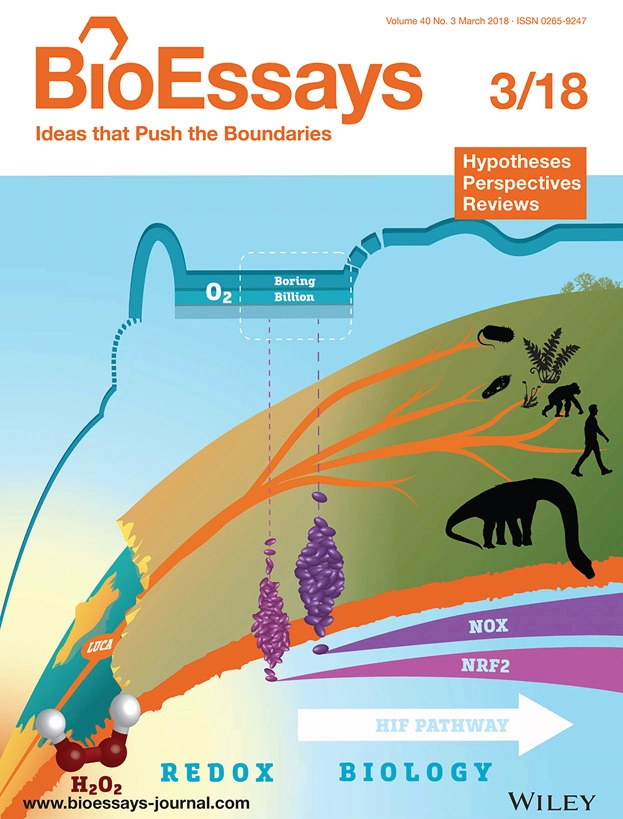-
Radical Factors in the Evolution of Animal Life
June 22, 2018 / Posted by: Miki HuynhComplex animal life appeared in the earth’s record soon after the second major rise in atmospheric oxygen roughly 800 million years ago. The evolution of enzymatic reduction of oxygen yielded a several-fold increase in energy production by life on Earth, enabling this progression to multicellular animal life. However, higher atmospheric oxygen concentrations would also have been expected to result in increased levels of reactive oxygen species (ROS) – derivatives of oxygen that are harmful to life and that, for humans, can accelerate aging and cardiovascular disease.
Yannick Taverne and his team, with support from Alternative Earths, the NASA Astriobiology Institute Team based at UC Riverside, have developed a molecular timeline for the production of ROS in the evolution of life. The paper is published in BioEssays.
The results indicate that the production of hydrogen peroxide (H2O2) and other reactive oxygen species was not a result of increased O2 levels in the atmosphere, but rather originates back to the very early Earth, and was a crucial consequence of early Earth’s weakly oxic microenvironments. Earth’s oxygen cycle did coincide with the evolution of major redox pathways that were preserved throughout time, and it played a major role in metazoan diversification and longevity.
Earlier lab data placed ROS at the center of human cardiovascular disease; however, the study’s new data suggest that ROS are essential in normal cellular physiology. Only when produced in excess or when antioxidants are depleted can ROS inflict damage on the cells leading to cardiovascular disease.
The results of this work, in addition to exploring how radical factors evolved, suggest a new focus on reactive oxygen species centered on the possible beneficial effects of ROS, rather than trying to eradicate them in clinical trials in order to modify human disease.

March 2018 cover of BioEssays. Source: WIley Online https://onlinelibrary.wiley.comSource: [BioEssays (via UC Riverside)]
- The NASA Astrobiology Institute Concludes Its 20-year Tenure
- Global Geomorphologic Map of Titan
- Molecular Cousins Discovered on Titan
- Interdisciplinary Consortia for Astrobiology Research (ICAR)
- The NASA Astrobiology Science Forum Talks Now on YouTube
- The NASA Astrobiology Science Forum: The Origin, Evolution, Distribution and Future of Astrobiology
- Alternative Earths
- Drilling for Rock-Powered Life
- Imagining a Living Universe
- Workshops Without Walls: Astrovirology